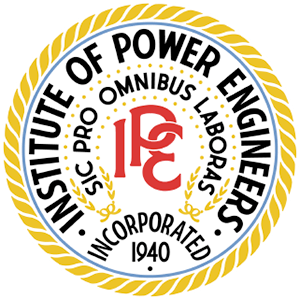To become a power engineer in Canada you must obtain and hold a certificate of competency or qualification issued by one of Canada’s technical regulators. Each province has set out in their respective Steam Engineers, Power Engineers or Operating Engineers Act the requirements for obtaining certifications/licenses. In order to qualify to become a power engineer the following steps will need to be satisfied:
- Education: Obtain a certificate or diploma in 5th, 4th or 3rd Class Power Engineering, or Power Engineering Technology from an accredited education provider.
- Examinations: Write applicable Provincial or Territorial Regulator examinations for the classification sought after (5th, 4th, 3rd, 2nd, 1st).
- Firing Time: Gain the necessary work experience to satisfy the regulators requirement for certification.
- Application: Apply for evaluation to obtain a certificate and license to operate in the jurisdiction.
Note: Although there are some differences in qualifying time between the regulators they all follow the Standardization of Power Engineers Examination Committee (SOPEEC).
The first step in becoming certified as a power engineer in Canada is getting the necessary educational prerequisites and skills. Many accredited education providers in Canada provide one or two year programs, including hands on experience opportunities in order to prepare students for the work they will be performing after graduation. Prospective students can choose between an array of one and two year certificate programs as well as two year technology diploma programs. Program offerings depend on province/territory you wish to study in.
Power engineering examinations are structured Into two parts. The first part is known as Part A, and the second part is known as Part B. The required amount of examinations you’re required to write is dependent on the power engineering classification you wish to obtain. The following outlines the exam structure for all power engineering examinations. Note: not all provinces have a 5th class certification.
Power Engineering Exam Structure:
- 5th Class (5A1)
- 4th Class (4A1, 4B1)
- 3rd Class (3A1, 3A2, 3B1, 3B2)
- 2nd Class (2A1, 2A2, 2A3, 2B1, 2B2, 2B3)
- 1st Class (1A1, 1A2, 1A3, 1A4, 1B1, 1B2, 1B3, 1B4)
Work experience, or firing time as it is called in power engineering is the practical component of a students progress to becoming a power engineer. In order to fulfill the necessary requirements for application and finally certification, an amount of hours or months is needed. This varies between classifications and between technical regulators in the jurisdiction of certificate/license application.
In order to obtain a 5th or 4th Class Certificate or license with a Canadian regulator proof of completing an approved Power/Operating Engineering program is required. For all other classes of power engineering, a program is not required but may be beneficial to the student. Although enrolment in a program or courses at the 3rd, 2nd and 1st class level are not required, completion grants a reductions in firing time. Consult the Acts and Standards regarding Power Engineers/Operating Engineers and technical regulator in the applicable jurisdiction.
Please be aware of the following:
The Institute of Power Engineers unequivocally states that we do not offer or provide any of the following services or authorities: certification, education, licensing, tutoring, proctoring, or any educational services of any kind. Furthermore, we do not issue or provide any form of licensing, whether governmental or non-governmental, nor do we possess any authoritative powers in that regard. It is important to note that all information presented on our website is purely informational in nature and is intended solely for the benefit of those who engage with our site. Our organization operates as a not-for-profit entity with a steadfast commitment to promoting safety, efficiency, and environmental awareness within industry, communities and society at large.
